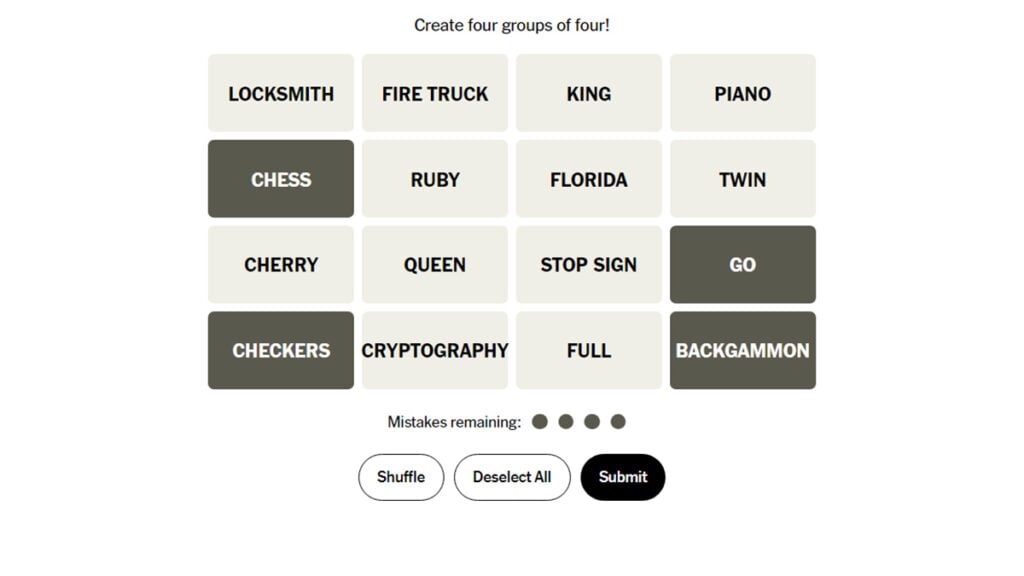Driving With ADHD: A Comprehensive Guide To Vehicle Safety

Table of Contents
Understanding the Challenges of Driving with ADHD
Driving requires sustained attention, impulse control, and careful planning – skills often impacted by ADHD. Let's examine the specific challenges:
Inattention and Distractibility
Inattention and distractibility are hallmark symptoms of ADHD, significantly impacting driving ability. These symptoms can manifest in various ways:
- Missed traffic signals: Failing to notice stop signs or traffic lights.
- Lane drifting: Unintentionally drifting out of one's lane.
- Delayed reactions: Slower response times to unexpected events like sudden braking from the car in front.
- Difficulty maintaining a consistent speed: Frequently speeding up or slowing down without awareness.
Research shows a strong correlation between inattentive driving behaviors and ADHD symptoms. Statistics indicate a higher accident rate among individuals with untreated ADHD compared to their neurotypical peers. The inattentiveness inherent in ADHD increases the risk of collisions and near-misses.
Impulsivity and Risk-Taking
Impulsivity, another core symptom of ADHD, can lead to risky driving behaviors such as:
- Speeding: Exceeding the speed limit or driving too fast for conditions.
- Unsafe lane changes: Making abrupt lane changes without signaling or checking blind spots.
- Ignoring traffic laws: Running red lights or stop signs, tailgating.
- Aggressive driving: Engaging in road rage or other aggressive maneuvers.
This impulsivity significantly increases the likelihood of accidents. Studies highlight a clear link between impulsivity in ADHD and higher accident rates. Learning to manage impulsive actions while driving is crucial for safety.
Hyperactivity and Restlessness
Hyperactivity, often manifesting as restlessness and fidgeting, can also pose challenges while driving:
- Fidgeting: Constant movement can distract from the road and impair driving focus.
- Restlessness: Difficulty staying still for extended periods, leading to fatigue and reduced alertness.
- Difficulty maintaining attention: Frequent shifts in focus, impacting driving performance and reaction time.
Long drives can exacerbate these issues. Implementing coping mechanisms, such as regular breaks and mindful driving techniques, is essential for managing hyperactivity behind the wheel.
Strategies for Safer Driving with ADHD
Fortunately, several strategies can mitigate the risks associated with driving with ADHD:
Medication Management
Medication plays a vital role in managing ADHD symptoms and improving driving safety. However, it’s crucial to:
- Consult a doctor: Always discuss medication changes with your doctor before altering your dosage or medication. Some medications might have side effects that could affect driving.
- Consistent adherence: Maintaining a consistent medication regimen is key for optimal symptom management. Inconsistent medication can lead to unpredictable mood swings and impulsive behavior.
- Awareness of side effects: Be aware of potential side effects like drowsiness or dizziness, and adjust driving accordingly.
Medication can significantly improve focus, reduce impulsivity, and enhance overall driving performance.
Vehicle Modifications and Technology
Utilizing assistive technologies and vehicle modifications can significantly improve safety:
- Adaptive cruise control: Maintains a safe following distance.
- Lane departure warnings: Alerts the driver if the vehicle drifts out of its lane.
- Blind-spot monitoring: Detects vehicles in blind spots.
- Apps for focused driving: Apps designed to reduce distractions and improve concentration.
- Choosing a vehicle with safety features: Prioritize vehicles with advanced safety features.
These technologies can compensate for some of the challenges associated with ADHD.
Behavioral Strategies and Techniques
Behavioral strategies are also crucial for safer driving:
- Mindfulness techniques: Practicing mindfulness can help improve focus and reduce distractions.
- Stress management: Learning to manage stress and anxiety before and during driving can improve performance.
- Pre-driving routines: Establishing a consistent pre-driving routine can help establish a calm and focused mindset.
- Driving simulations: Practicing driving skills in a simulated environment can build confidence and improve skills.
Driving Route Planning and Preparation
Careful planning can minimize unexpected challenges:
- Familiar routes: Stick to familiar routes as much as possible to reduce cognitive load.
- Effective GPS usage: Utilize GPS navigation to avoid getting lost or making unexpected turns.
- Traffic anticipation: Plan for potential traffic delays and adjust driving accordingly.
Seeking Professional Support
Professional support can provide valuable coping mechanisms and guidance:
Therapy and Coaching
- Cognitive Behavioral Therapy (CBT): Can help develop strategies for managing impulsivity and inattention.
- Driving coaching: Specialized programs offer tailored instruction and feedback to improve driving skills.
- Finding qualified professionals: Search for therapists and driving coaches specializing in ADHD.
Therapy provides valuable tools for managing ADHD symptoms in various contexts, including driving.
Driver Rehabilitation Programs
- Specialized programs: Driver rehabilitation programs address driving challenges associated with disabilities, including ADHD.
- Comprehensive assessments: These programs typically include a comprehensive assessment of driving abilities.
- Personalized recommendations: They provide personalized recommendations and training to improve safety.
These programs offer comprehensive support to help individuals with ADHD safely navigate the road.
Conclusion
Driving with ADHD presents unique challenges, but with careful planning, medication management, and professional support, individuals can significantly improve their driving safety. By understanding the specific difficulties posed by ADHD symptoms and implementing the strategies outlined above, drivers with ADHD can significantly reduce their risk of accidents. Take control of your driving safety and learn more about effective strategies for managing ADHD while driving. Start your journey towards safer driving today!

Featured Posts
-
 Bof A On Stock Market Valuations A Reason For Investor Calm
Apr 29, 2025
Bof A On Stock Market Valuations A Reason For Investor Calm
Apr 29, 2025 -
 Tfasyl Antlaq Fealyat Fn Abwzby 19 Nwfmbr
Apr 29, 2025
Tfasyl Antlaq Fealyat Fn Abwzby 19 Nwfmbr
Apr 29, 2025 -
 Solve The Nyt Spelling Bee April 27 2025 Answers And Spangram
Apr 29, 2025
Solve The Nyt Spelling Bee April 27 2025 Answers And Spangram
Apr 29, 2025 -
 Inaccurate Social Media Reports Following Fatal D C Plane Crash
Apr 29, 2025
Inaccurate Social Media Reports Following Fatal D C Plane Crash
Apr 29, 2025 -
 Mesas Upcoming Shen Yun Show
Apr 29, 2025
Mesas Upcoming Shen Yun Show
Apr 29, 2025
